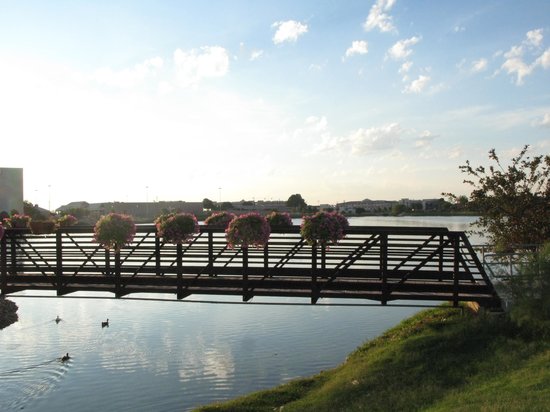Ukraine is a large country in Eastern Europe known for its Orthodox churches, Black Sea coastline and forested mountains. Its capital, Kiev, features the gold-domed St. Sophia's Cathedral, with 11th-century mosaics and frescoes. Overlooking the Dnieper River is the Kiev Pechersk Lavra monastery complex, a Christian pilgrimage site housing Scythian tomb relics and catacombs containing mummified Orthodox monks.
Pearl of blacksea:
Odesa is referred to as the "Pearl of the Black Sea" is the 3rd largest city in Ukraine, the largest city along the Black Sea, and the most important city of Ukraine for trade. Odesa's mild climate, warm waters and sunlit beaches attract hundreds of thousands of people year around. Its shady lanes, beautiful lightly pastel buildings and cozy squares impart to the city a certain air of intimacy.
Odesa is simply enchanting with its marvelous architecture. Odesa's history as a thriving enterprise has left the city with some splendid architecture from the 18th and 19th centuries and a multifaceted, irrepressible spirit. Some buildings display a carious mixture of different styles, such as distinct French architecture with a distinct Russian flavor, and some are built in the Art Nouveau Style which was in vogue at the turn of the century. Its stately 19th century classical architecture is set on orderly planned streets that are surrounded with green space, giving the city an air of elegance.
Strikingly ornate buildings of the late 19th and early 20th century are reminiscent of Right Bank Paris. Most buildings in Odesa were built with white stone consisting of calcareous materials imbedded with seashells, which appears to be saturated with hot sunshine. This gives many of the city's buildings a whitewashed appearance. The extracted limestone resulted in the formation of an entire labyrinth of underground galleries.
One of the few planned cities in Ukraine, Odesa's central core is laid out in a grid. The first city plan designed by the engineer F. Devollan in the late 18th century was executed by the generations of Odesa architects that followed. As early as the first half of the 19th century, the numerous landowners who had moved to Odesa attracted by the profitable grain trade, started constructing their private residences. As a rule, they would build palace compounds: two-storied mansions with forecourts, wrought iron grilles and porticos indicating the entrance. Even today, the formal halls of these palaces are strikingly opulent. The mansions of wealthy merchants and factory-owners built to the designs of the best Odesa architects were concealed in the verdure of Frantsuzky Boulevard.
What we can do?
1. Local Restaurants:
Odessa is known for its good food and quirky cafes. The meals are plentiful, prices are acceptable and the interior design is often fascinating.
2. Jump on the mother in-law bridge:
This obscure pedestrian bridge links Primorsky Boulevard with Zhvanetsky Boulevard. The story of the weird name goes all the way to 1950s, when the structure was designed. They say, that it was built by the First Secretary of Odessa Communist Party, for the sole purpose of making the walk to his work to his mother-in-law’s house and her delicious pancakes shorter. For those in love with adventures, bring your group of friends and try jumping on the bridge. If you jump strong enough, and if the weather is windy, the platform starts shaking!
3. Listen music at Opera house:
Odessa Opera Theater is rightfully considered among the most beautiful in Europe. The original building was finished in 1810, but burned down in 1873. Current Theater design was done in the style of Viennese barocco in 1887. Full restoration of the Opera Theater was completed in 2007. Opera Theater has unique acoustics and even the quietest whispering from the stage can be heard in any part of the hall.
4. Discover of underworld of Odesa:
World’s largest network of underground catacombs is located right under Odessa. They are long – over 2,500 km and still counting, very dark – only a small portion of it is officially open as an museum, and full of history. First catacombs started to appear in 19th century, as underground quarries. During the World War II, local partisans used the labyrinths for hiding. Currently most of the catacombs are accessible only to the groups of enthusiasts and are not advised to be explored on your own.
5. Shopping:
Colorful, vibrant and kaleidoscopic – Odessa markets sell everything: from delicious home-made food and freshly picked apples, to fridges, animals and Soviet Ladas.
6. The monument to the orange:
Modern times call the Monument ‘Long live the bribe’ and joke about the Monument’s recent move: from the front yard of city’s local council to the more obscure location at Zhvanetsky Boulevard.
7. Dinester Delta National Park- Natural beauty:
Northern part of Dniester Liman is a wetland of international importance. The area is home to many endangered species, both plant and animal, which are included into the Red Data Books of Ukraine and Moldova, as well as the Red List of Threatened Species maintained by the World Conservation Union (IUCN). The bird community, nesting in the wetlands, is especially valuable and includes the glossy ibis (Plegadis falcinellus), its most endangered species.


Wow! Such an amazing and helpful post this is. I extremely love it. It's so acceptable thus marvelous. I'm simply flattered. I trust that you keep on tackling your job like this in the future too.
ReplyDeleteFamous Places in Ukraine